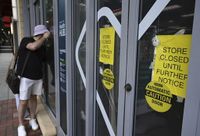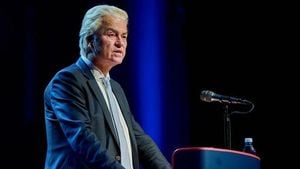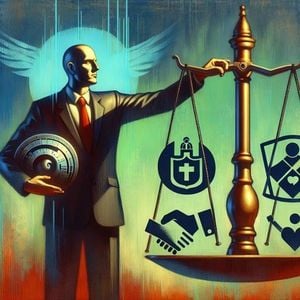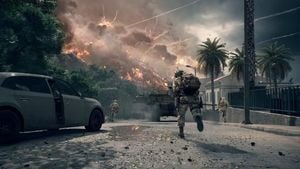Less than a month after a deadly shooting rattled the Centers for Disease Control and Prevention (CDC) headquarters in Atlanta, employees are being ordered back to their offices—a move that has sparked outrage, anxiety, and fierce debate over workplace safety and leadership priorities. The August 8, 2025, attack, which authorities say was motivated by COVID-19 vaccine conspiracy theories, left physical and emotional scars that have yet to heal. Now, with a September 15 deadline looming, CDC staff and their union representatives are voicing concern that the trauma and unresolved security issues are being brushed aside in the rush to return to business as usual.
According to Fox 5, CDC Chief Operating Officer Lynda Chapman sent an email to all employees laying out the mandate: all personnel must report to their approved on-campus offices by September 15. Chapman, who stepped into the role just days before issuing the order, assured staff that “significant progress on repairs” was underway and that “alternative on-campus space will be provided” for those whose work areas remain damaged. But for many employees, that promise rings hollow.
“There will absolutely still be bullet holes in the windows,” said Peter Farruggia, executive board member of the AFGE Local 2883 union, in comments reported by Government Executive. The visible reminders of violence—shattered glass, pockmarked walls—serve as a constant trigger for those who lived through the shooting. Farruggia’s colleague and union treasurer, Reese Williams, echoed the sentiment, noting the union’s ongoing efforts to advocate for staff well-being. “I think it makes sense, we’re one of the largest unions, and we have been doing a lot of work,” Williams said.
The trauma isn’t just psychological. Employees returning for essential duties have found themselves navigating a workplace that still bears the scars of the attack. Questions about structural safety abound, from the adequacy of bulletproofing to the reliability of emergency exits and the robustness of security protocols. “Employee anxiety persists despite some returning voluntarily, many requiring lab access or essential duties, while others face lingering questions about structural safety,” Government Executive reported.
But the return-to-office mandate has become a flashpoint for a much broader conflict—one that pits staff and union leaders against the current CDC leadership and, by extension, the Trump administration. The union has demanded not only stronger security measures but also a public denouncement of the vaccine conspiracy theories that authorities say fueled the shooter’s actions. So far, those calls have gone largely unanswered.
The leadership’s response has only deepened the sense of alienation among CDC workers. Chapman’s background—she is an attorney and pharmacist with no public health agency experience—has come under scrutiny. Critics have pointed out that her appointment was less about merit and more about political loyalty. According to Daily Kos, Chapman “got her position not because she has any public health expertise, nor any experience overseeing government agencies,” but rather due to her ties to the Trump administration, even running a website selling photos of President Donald Trump.
Chapman’s disregard for CDC workers is, in the eyes of many, emblematic of a larger pattern. The administration’s decision to stop recognizing the union representing CDC workers has further inflamed tensions. Even as union leaders push for more security and support, their ability to advocate effectively has been undermined by this move. “We’re not going anywhere,” Farruggia insisted, urging staff to comply with the mandate to avoid job losses, even as he acknowledged the discomfort and unease many feel.
Meanwhile, the leadership’s public communications have done little to reassure staff. Chapman’s predecessor, Christa Capozzola, sent an email on August 15 stating, “There are things that will not be seen as we strengthen our security posture to protect you and our campus.” For many, such vague promises offer little comfort when the physical evidence of the shooting is still so starkly apparent.
The fallout from the shooting and the subsequent return-to-office order has also exposed deeper fissures within the CDC and the federal government’s approach to public health leadership. Health and Human Services Secretary Robert F. Kennedy Jr. was widely criticized for his delayed and lackluster response to the attack. According to Daily Kos, it took Kennedy 18 hours to issue what was described as a “banal response,” only after posting photos of a fishing trip. To date, President Trump has not made a public statement about the shooting.
The leadership shakeup at the CDC has only added to the sense of instability. CDC Director Susan Monarez, who had genuine public health experience, was abruptly fired and replaced by Jim O’Neill, a biotech investor with a master’s degree in humanities but no medical or scientific training. O’Neill’s appointment, alongside Chapman’s, has been interpreted by many as evidence that political loyalty now trumps expertise at the highest levels of the nation’s public health infrastructure.
In an email to CDC staff, Kennedy attempted to strike a conciliatory note, writing, “Reform does not diminish your work; it strengthens it. The American people are ready to believe in this agency again if we show them that integrity, accountability and science guide every decision.” But for many employees, such words ring hollow in the face of what they see as a disregard for their safety and professional expertise.
The union’s demands for stronger security and public condemnation of vaccine conspiracy theories reflect a broader concern about the politicization of public health. The shooter’s motivation, rooted in the same COVID-19 conspiracies now endorsed by some in the Trump administration, has left many employees feeling vulnerable—not just to physical violence, but to the erosion of the scientific integrity that underpins their work.
With the September 15 deadline fast approaching, the CDC’s return-to-office order has become a symbol of the challenges facing America’s public health workforce: the struggle to balance mission-critical duties with the need for safety, the tension between political leadership and professional expertise, and the ongoing trauma of working in an environment marked by violence and uncertainty.
As CDC staff weigh their options—torn between job security and personal well-being—the outcome of this standoff will have implications far beyond Atlanta. It’s a test of whether the nation’s premier public health agency can reclaim a sense of security and purpose in an era marked by deep political divisions and persistent threats, both physical and ideological.
For now, the bullet holes in the CDC’s windows serve as a stark reminder of the work that remains to be done—not just in repairing buildings, but in restoring trust, safety, and a sense of mission to those on the frontlines of America’s public health response.




